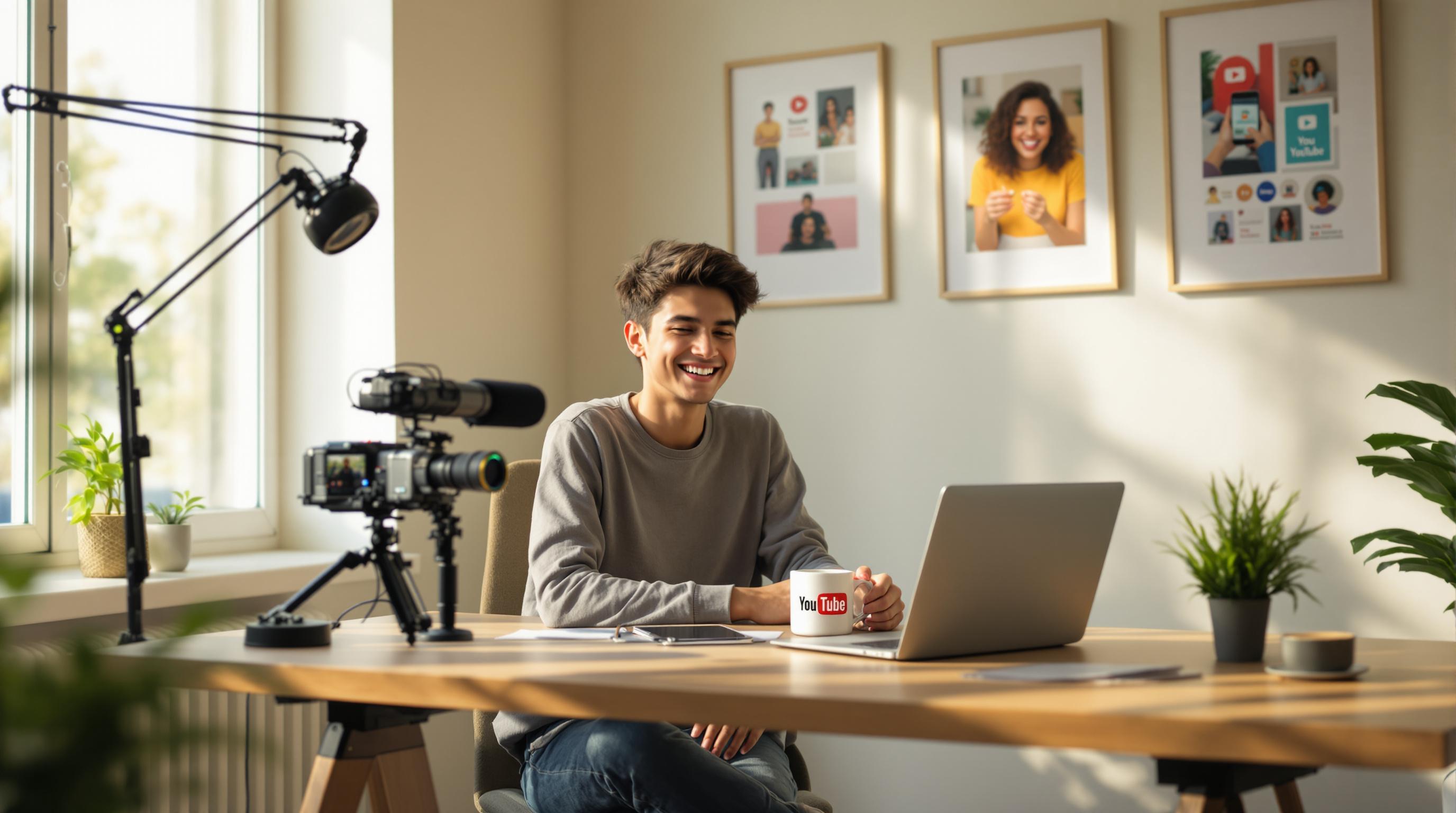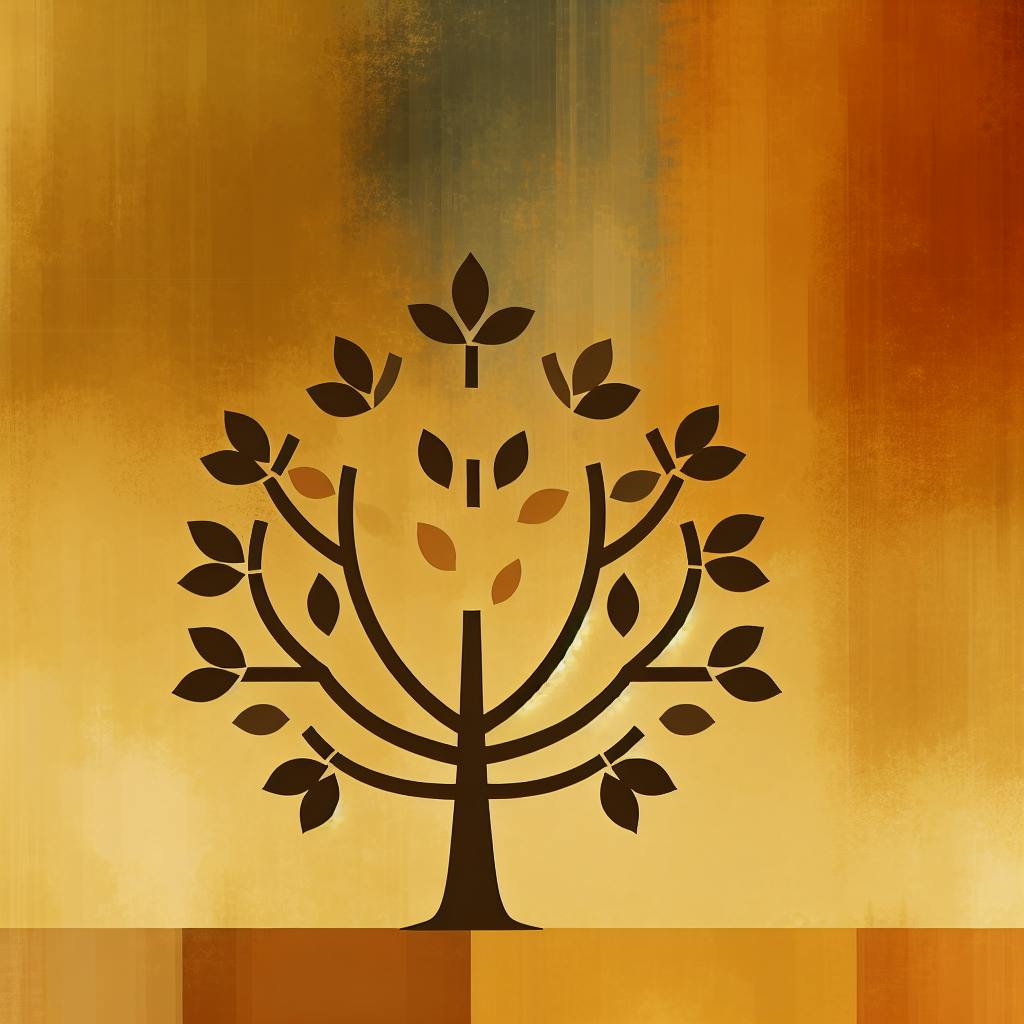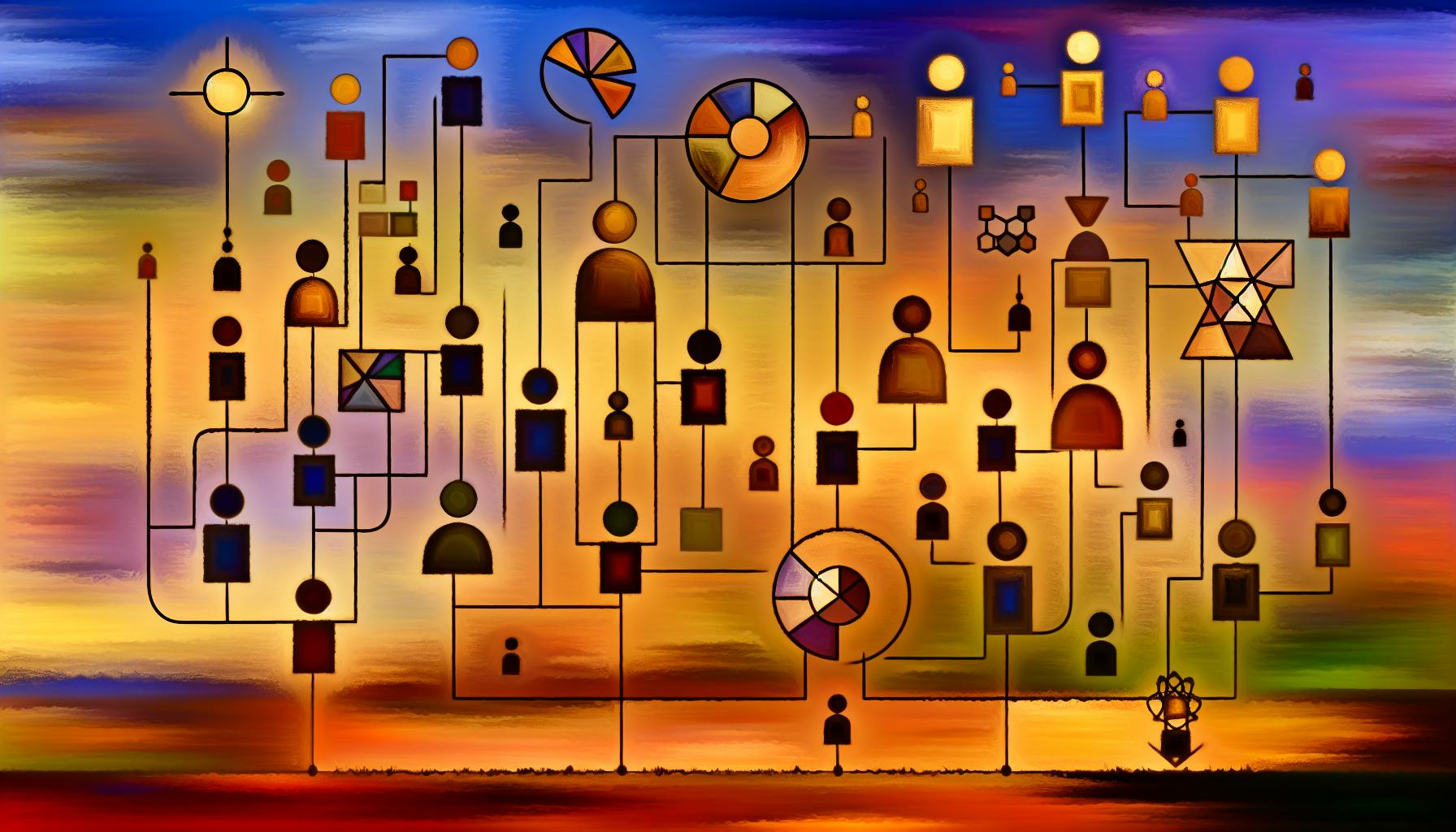Collective licensing is a system that helps creators protect and monetize their work by:
- Using middlemen (Collective Management Organizations or CMOs) to manage licensing
- Offering blanket licenses for users to access large libraries of content
- Collecting and distributing royalties to creators
Key benefits for creators:
- Saves time on managing individual licenses
- Increases exposure and potential earnings
- Provides better negotiating power
- Offers legal protection and advocacy
To get started:
- Check if your content qualifies (e.g. music, writing, visual art, video)
- Find the right CMO for your industry and region
- Gather required documents and apply
- Register your work before public release
To maximize earnings:
- Understand royalty splits and negotiate wisely
- Use multiple platforms (e.g. Patreon, content marketplaces)
- Keep organized records of all licenses
- Stay compliant with license terms
Protect your work by:
- Registering copyrights
- Using Digital Rights Management (DRM)
- Monitoring for unauthorized use
Next steps:
- Join a Performing Rights Organization (PRO)
- Register with the Mechanical Licensing Collective (MLC)
- Consider a publishing deal
- Network for licensing opportunities
- Stay informed on industry changes
Related video from YouTube
What Is Collective Licensing?
Collective licensing is a game-changer for creators. It's a system that helps them protect and monetize their work, especially when dealing with individual users isn't practical. This approach is a big deal in the music world, but it's not just limited to tunes.
The Basics
At its heart, collective licensing involves middlemen called Collective Management Organizations (CMOs). These guys bridge the gap between creators and folks who want to use copyrighted stuff. They offer blanket licenses - think of them as all-access passes to a huge library of content.
Picture this: A club owner wants to play music. Instead of calling up every artist (can you imagine?), they just get a license from a CMO. Easy peasy for the club owner, and the artists still get paid. Win-win.
CMOs: The Unsung Heroes
CMOs are the workhorses of collective licensing. They:
1. Haggle over rates with users
2. Keep tabs on who's using what
3. Collect the cash
4. Dish out the dough to rights holders
Let's look at some real-world players:
In the US, ASCAP and BMI are the big dogs. They've got millions of songs and hundreds of thousands of creators under their wing.
Across the pond, the UK's Copyright Licensing Agency (CLA) lets organizations legally copy bits from books, magazines, and websites.
These organizations make sure creators get paid when their stuff is used. As David Israelite from the National Music Publishers' Association puts it:
"CMOs are the unsung heroes of the music industry. They make sure that when a song is played, the creator gets paid."
Why Creators Love It
Collective licensing is a creator's best friend. Here's why:
1. It's a time-saver: Creators can focus on creating, not chasing down every use of their work.
2. It opens doors: Your work can pop up in all sorts of places - schools, businesses, government offices. More exposure, more potential earnings.
3. It levels the playing field: CMOs negotiate for many creators at once, often scoring better deals than solo artists could.
4. It's got your back: CMOs can take legal action if someone uses your work without permission.
5. It gives you a voice: These organizations speak up for creators when it comes to copyright laws and industry practices.
Take musicians, for example. By signing up with a Performance Rights Organization like ASCAP or BMI, they can cash in when their tunes hit the airwaves, play in public spots, or stream online.
But here's the kicker: while collective licensing can be awesome, you've got to know what you're signing up for. Some licenses might let companies use your work forever or without giving you credit. So always read the fine print, and don't be shy about getting legal advice if something seems fishy.
How to Start with Collective Licensing
Want to jump into collective licensing? Here's a straightforward guide to get you going and boost your earnings as a creator.
What Content Qualifies
Collective licensing isn't for everything. Here's what usually makes the cut:
- Songs, compositions, and recordings
- Books, articles, and other written works
- Photos, illustrations, and visual art
- Films, TV shows, and video clips
Your work needs to be original and copyrightable. Not sure? Ask a copyright expert or the CMO you're eyeing.
Finding the Right CMOs
Picking the right Collective Management Organization (CMO) is key. Here's how:
1. Look for industry-specific CMOs
If you're a musician in the US, check out ASCAP or BMI.
2. Consider geographical coverage
Some CMOs work worldwide, others stick to certain areas.
3. Compare services and fees
What do they offer? How much do they take from your royalties?
4. Ask other creators
Get the scoop from folks in your field who are already using collective licensing.
For example, if you're a publisher in the UK, the Publishers Licensing Services (PLS) might be your go-to. They handle collective licensing for over 4,000 publishers.
Required Papers and Sign-up Steps
Ready to sign up? Here's what you'll typically need:
- Proof that you own the rights to your work
- Government-issued ID and tax info
- A list of all the content you want to register
- The CMO's application form
Here's how it usually goes:
- Reach out to the CMO for specific instructions
- Submit your application with all the required docs
- Register each piece of content once you're accepted
- Read the terms carefully, then sign the agreement
As the PLS team puts it: "It's quick, easy and free to register, and we have lots of resources to help you." Most CMOs share this attitude, so don't sweat the process.
Pro tip: Register your work as soon as it's set for release, but always before it goes public. This keeps you protected from day one.
sbb-itb-bc761f5
Getting the Most Money from Your Licenses
Want to maximize your earnings from collective licensing deals? Let's break down the money flow and explore some platform options that can boost your income.
How Money Gets Split
Understanding the financial breakdown is key. Here's how the pie is typically sliced:
Royalty Rates: The Copyright Royalty Board set the streaming mechanical royalty rate at 15.1% of gross streaming revenue. Good news: it's set to increase from 2023 to 2027.
Producer Cuts: For indie artists, producers usually take 15-25% of net royalties. Ari Seth Herstand, a music industry expert, says: "You can negotiate the backend percentage based on the upfront fee." For example, a producer might take a lower $500 upfront for a higher 25% backend royalty.
Label Splits: If you're with a label, your cut varies. Example: A song makes $100,000. With a 50% royalty agreement, you'd get $50,000. But watch out - contract terms can change everything.
To boost your earnings:
- Register smart: Use a music distributor for streaming royalties, join a PRO for performance royalties, and consider a mechanical collection society like SongTrust.
- Negotiate wisely: Higher upfront fee? Accept a lower backend percentage. Low upfront? Push for a higher backend.
- Know your rights: If you're independent and self-funded, you own both songwriting and master recording copyrights. That means more royalties in your pocket.
Platform Options
Traditional licensing is great, but new platforms are opening doors. Here's how to use them:
Creator Economy Platforms: Patreon, Substack, and OnlyFans let you interact directly with fans for payment. They offer subscriptions, virtual goods stores, and more.
Revenue Sharing Tools: Platforms like iMusician offer revenue split features. As they put it: "It's a transparent way to share royalties and ensure everyone gets their fair share."
Content Licensing Marketplaces: Great for visual artists and photographers. License your content for commercial use.
TapeReal: This video platform lets creators sell access to early drops, bonus videos, and behind-the-scenes content. It also offers premium memberships to grow your audience and monetize exclusive content.
Handling Multiple Licenses
Juggling several licensing agreements? It's not easy, but it's key for creators who want to boost their income. Let's look at some practical ways to keep your licenses in order and play by the rules.
Keeping Track of Licenses
Don't let multiple licenses give you a headache. Here's how to stay organized:
- Build a digital database: Use a spreadsheet or specialized software to log your agreements. Include the important stuff: when they expire, royalty rates, and what you can and can't do.
- Set reminders: Use your calendar app to ping you about key dates. When's that license up for renewal? When do you need to send in royalty reports?
- Get your files in order: Keep digital copies of all your agreements. Organize them well. Think about using cloud storage so you can access them anywhere and have a backup.
- Make a content hub: Some creators set up a website where they can quickly find, preview, and grab approved files. This can be a lifesaver when you're dealing with lots of licensees.
"Nobody wants to go back and forth with you while you figure out your splits. If they love the song, make it easily clearable for the person that you're pitching." - Dom Jones, B.M. '19, Sony SyncShop
Dom's got a point. Having your licensing info ready to go can make or break a deal.
Following the Rules
Sticking to the terms of your licensing agreements is crucial. It keeps you out of legal hot water and on good terms with your licensees. Here's how to stay on track:
- Read everything: Only 41% of creative pros read their licensing agreements cover to cover. Don't be like the other 59%. Know what you're agreeing to.
- Make a compliance checklist: For each license, jot down the key things you need to do. This might be how you give credit, what you can't do with the content, or what reports you need to file.
- Do regular check-ups: Every so often, take a look at how your content's being used. Make sure it lines up with what the license says.
- Keep talking to licensees: Stay in touch with the people using your stuff. Let them know about changes or new content. If they have concerns, deal with them head-on.
- Keep an eye on rights management: New tech is always popping up to fight copyright infringement. Stay in the loop to protect your work better.
Legal Rights and Safety
Let's talk about protecting your work and dealing with problems in collective licensing. It's not the most exciting topic, but it's crucial if you want to keep your creations safe and make money from them.
Protecting Your Work
Your creations are your bread and butter. Here's how to keep them safe:
Register your copyright. It's not mandatory, but it gives you extra legal muscle if someone tries to steal your work.
Join a Collective Management Organization (CMO). These groups, like ASCAP or BMI in the U.S., help manage your rights and collect your royalties. They're like your personal copyright bodyguards.
Use Digital Rights Management (DRM). It's like putting a digital lock on your content. It makes it harder for people to use your stuff without permission.
Keep an eye on your content. Set up Google Alerts for your name and work titles. It's like having a personal detective watching out for unauthorized use of your creations.
Know the rules of the platforms you use. Each social media and streaming platform has its own copyright policies. YouTube, for example, has a whole education series on music licensing and copyright.
"Copyright law gives you a bundle of rights in your music. But remember, these rights aren't absolute - they're balanced with the rights of other creators and the public." - Public Knowledge
Solving Problems
Sometimes, even with all these precautions, you might run into issues. Here's what you can do:
File a DMCA takedown notice if you find someone using your work without permission. It's like sending a cease and desist letter, but for the internet.
Get a lawyer if things get complicated. An intellectual property expert can guide you through the legal maze.
Try alternative dispute resolution. The WIPO Arbitration and Mediation Center can help you settle disputes without going to court. It's usually faster and cheaper than a full-blown lawsuit.
Talk it out. Sometimes, reaching out directly to the person using your work can solve the problem. They might not even realize they're infringing on your copyright.
Stay in the loop. Copyright laws change. For example, the Music Modernization Act of 2018 shook things up for music licensing in the U.S. It's all about making sure creators get paid fairly.
Here's a sobering thought: willful copyright infringement can lead to fines of up to $150,000 per song. That's why it's so important to protect your work - and respect others' copyrights too.
Next Steps
You've got the basics of collective licensing down. Now it's time to put that knowledge to work. Here's what you need to do:
Join a PRO
Sign up with ASCAP, BMI, or SESAC. These organizations will collect your performance royalties when your music plays on radio, TV, or in public spaces.
Check Out the MLC
The Mechanical Licensing Collective (MLC) handles mechanical royalties for digital streaming and downloads. It launched in 2021, and it's a game-changer. Here's what MLC CEO Kris Ahrend says:
"Quite simply, if you have an interest in receiving mechanicals for a musical work, and it's not registered with us, then we can't pay."
Head to the MLC website and hit "Connect to Collect" to register your works. It won't cost you a dime, and you'll get 100% of your royalties.
Think About Publishing
A publishing deal can open doors. Publishers have connections that could land you more licensing gigs.
Network for Licensing
Get to know music libraries, filmmakers, and other potential licensees. For instance, Stability AI teamed up with AudioSparx, using 800,000 tracks to train its Stable Audio generator. They made sure to secure commercial use rights for customers.
Stay in the Loop
Keep tabs on industry changes. The Music Modernization Act of 2018 shook things up in the U.S. music licensing scene. Get involved in collective decision-making to help shape policies that affect creators like you.
Uzor Daniel, who wrote The Musician's Guide to Income, puts it this way:
"Building a sustainable music career takes time and effort. By understanding royalties, publishing, and licensing, you can empower yourself to create a diversified revenue stream, increase your chances of a successful career in the music industry, and turn your musical passion into a financially rewarding journey."
So there you have it. Get out there and start making moves. Your music career won't build itself!



